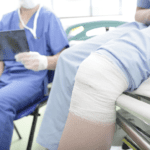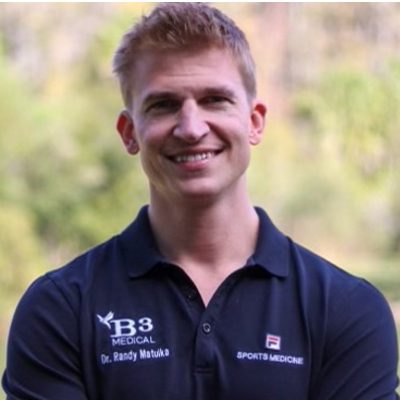In 1931, French physician Dr. Albert Schweitzer remarked that “Pain is a more terrible lord of mankind than even death itself.” Pain is the number one reason Americans access the health care system, and the number one cause of disability, affecting more people than heart disease, diabetes, and cancer combined. With so many affected, it might seem that all pain could be treated the same, or that intense interventions are always necessary for improvement, but that’s not the case. Following are 5 surprising facts about pain management.
1. There are actually no pain fibers in the body.
Pain is an interpretation of the nervous system of tissue damage. Many times, nerves can become activated leading to muscle spasm, swelling and decreased joint motion. Bringing back proper joint motion via a specific joint adjustment leads to decreased swelling, increased motion, decreased nerve firing and pain management.
2. Nutritional support can be very impactful.
B3 Medical’s Founder, Dr. Tim Bain, is an expert on nutrition for both pain management as well as elite athletic performance. His thought leadership on the value of proper nutrition was highlighted in an article by Dynamic Chiropractic. The latest developments in nutritional science can help us unlock the path to optimal health, minimizing pain and inflammation, and maximizing performance.
At the same time, proper nutritional support has been known as a key factor in health for over two thousand years. Hippocrates, largely considered to be the father of medicine, recognized the impact of what we consume on our health and stated to “Let food be medicine and thy medicine be food.” Nutritional interventions can help clear painful inflammation from the body and also create an internal environment that supplies the building blocks to support healing.
3. Pain is a subtle, sensory experience, and isn’t just in our muscles and joints.
Around the structure of our skeletal frame is a web of connective tissue that enables all of our physiological systems to function as a whole. Sensations of pain can cause muscles to seize up, and connective tissue like fascia can also tense and create restrictions that prevent the effective removal of wastes that compromise pain relief and healing. Physical therapy, massage therapy, and neuromuscular therapies can help.
4. A key to pain management is regaining and maintaining functional movement.
It can be hard to keep moving when experiencing acute or chronic pain, but staying mobile and functional is an important method of pain management. Movement not only encourages circulation to compromised areas, but it also helps develop muscle strength and stability and can contribute to mental health improvements.
5. Pain is also Mental and Emotional.
It might seem like just a physical experience, but pain, especially chronic pain, is psychologically and emotionally straining, and getting stuck in an anxious, frustrated or hopeless state can actually lead to more pain. Increased stress levels can actually increase our sensation of pain, which then leads to more deregulation in our mental and emotional states. An important aspect of pain management can be developing a hopeful and healthy mindset.
Trust the Professionals in Pain Management
At B3 Medical, our focus has been on designing a compassionate and innovative model of care and treatment that helps our patients become confident in the healthcare system again. With the goal of returning you to health rather than just managing your health and pain challenges, we offer non-surgical interventions and comprehensive, proactive lifestyle guidance to get you back to the life you love. Join us today for a consultation and to learn more about how we can help.



























